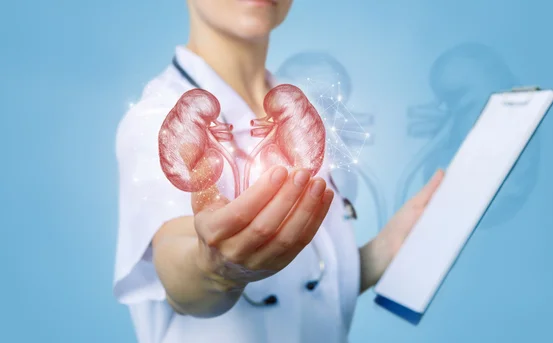Diagnosis of Varicocele repair surgery is a medical condition characterized by the enlargement of veins within the scrotum, similar to varicose veins in the legs. While not always symptomatic, varicoceles can impact male fertility and testicular function. Early diagnosis plays a crucial role in determining the best course of treatment, including the potential need for varicocele repair surgery.
Though varicocele is typically not life-threatening, it can have significant implications for a man’s reproductive health and overall quality of life. In many cases, varicoceles are discovered incidentally during routine physical exams or fertility evaluations. That’s why understanding how varicocele is diagnosed, what symptoms to watch for, and when surgical treatment is recommended is so important.
What Is a Varicocele?
A varicocele is a dilation or enlargement of the pampiniform plexus, a network of veins in the scrotum that drain blood from the testicles. This condition typically affects the left side of the scrotum due to anatomical differences in the vein structure.
While many men may have a varicocele and never notice symptoms, for others, it may cause discomfort, testicular atrophy, or even male infertility.
Common Symptoms of Varicocele
Recognizing the symptoms is the first step toward diagnosis. Common varicocele symptoms include :-
-
A dull, aching pain in the scrotum, particularly after standing or physical activity.
-
Visible or palpable enlarged veins in the scrotum (“bag of worms” appearance).
-
Swelling or heaviness in the testicle.
-
Testicular shrinkage (atrophy).
-
Fertility issues, such as low sperm count or poor sperm quality.
Many varicoceles are asymptomatic and only discovered during routine fertility testing or a physical examination.
Importance of Early Diagnosis
Early diagnosis of varicocele is crucial to avoid complications such as :-
-
Decreased sperm quality and count
-
Testicular shrinkage
-
Scrotal discomfort or chronic pain
-
Progressive infertility
Identifying the condition at an early stage can help in determining whether conservative management or surgical intervention is appropriate.
Diagnosis of Varicocele Repair Surgery
Medical History and Symptom Assessment
The diagnostic journey begins with a detailed medical history. The doctor will ask about :-
-
Any scrotal pain or discomfort
-
Duration of symptoms
-
Fertility issues
-
History of trauma or infections
This helps guide the subsequent physical and diagnostic evaluations.
Physical Examination
A physical exam is usually the first step in diagnosing a varicocele. The urologist will :-
-
Palpate the scrotum while the patient is standing and lying down
-
Ask the patient to perform a Valsalva maneuver (bearing down as if having a bowel movement) to make the veins more prominent
A varicocele is graded based on its severity :-
-
Grade 1 :- Small; palpable only during Valsalva
-
Grade 2 :- Moderate; palpable without Valsalva
-
Grade 3 :- Large; visible and palpable
Scrotal Ultrasound (Doppler Ultrasound)
To confirm the diagnosis, a scrotal ultrasound with Doppler imaging is typically recommended. This imaging test :-
-
Measures the diameter of veins
-
Detects reflux of blood (a key indicator of varicocele)
-
Provides detailed anatomy of the testicular veins
Ultrasound is especially helpful for diagnosing subclinical varicoceles, which are not detectable during a physical exam but may still affect fertility.
Semen Analysis (If Fertility Is a Concern)
For men seeking fertility evaluation, a semen analysis may be advised. This test examines :-
-
Sperm count
-
Motility (movement)
-
Morphology (shape)
Abnormal results may support the diagnosis of a clinically significant varicocele impacting fertility.
Hormone Testing
In some cases, hormone levels such as testosterone, FSH, and LH may be tested to assess testicular function, especially in men with fertility issues.
When Is Varicocele Surgery Recommended?
Varicocele repair surgery is not always necessary. However, surgical treatment may be advised in the following situations :-
- Infertility or Abnormal Semen Analysis :- Men with a diagnosed varicocele and abnormal semen parameters may benefit from varicocele repair, which can improve sperm quality and increase the chances of natural conception.
- Testicular Atrophy :- If the varicocele is causing one testicle to shrink, surgery can help prevent further damage and potentially restore testicular growth and function.
- Chronic Pain :- Varicocele-related pain that does not respond to conservative treatments such as scrotal support or NSAIDs may require surgical intervention.
- Adolescent Varicocele with Testicular Discrepancy :- In adolescents, surgery may be recommended if there is a significant difference in testicle size, indicating impaired testicular development.
Types of Varicocele Repair Surgery
Several surgical options are available for varicocele treatment :-
- Microsurgical Varicocelectomy
-
Performed using a microscope to identify and ligate dilated veins.
-
Considered the gold standard due to low recurrence and complication rates.
-
Usually done through a small incision in the groin.
- Laparoscopic Varicocelectomy
-
Performed using a laparoscope inserted through the abdomen.
-
Suitable for bilateral varicoceles or when other abdominal procedures are needed.
- Percutaneous Embolization
-
A minimally invasive procedure done by an interventional radiologist.
-
A catheter is inserted into a vein, and coils or sclerosing agents are used to block the affected veins.
Each method has its benefits and risks. The choice of procedure depends on the patient’s condition, surgeon’s experience, and personal preference.
Risks and Complications of Surgery
Though varicocele repair is generally safe, potential complications include :-
-
Hydrocele (fluid collection around the testicle)
-
Infection
-
Bleeding
-
Injury to nearby structures
-
Recurrence of varicocele
Choosing an experienced surgeon and following post-operative care instructions can minimize risks.
What to Expect After Diagnosis and Surgery?
After surgery, patients typically experience :-
-
Reduced or eliminated scrotal pain
-
Improved semen parameters over 3–6 months
-
Increased likelihood of natural conception
-
Short recovery period (1–2 weeks for light activities)
Follow-up appointments, including repeat semen analyses, help evaluate surgical success and guide further fertility planning if needed.
Final Thoughts: Early Diagnosis Matters
Varicocele is a common condition that often goes unnoticed until it affects fertility or causes discomfort. An accurate and timely diagnosis through physical examination, ultrasound, and semen analysis is crucial in determining whether varicocele repair surgery is needed.
For men trying to conceive or experiencing testicular discomfort, consulting a urologist for evaluation is a proactive step toward effective treatment and reproductive health.
Conclusion
Understanding the diagnosis process for varicocele and knowing when surgery is necessary empowers patients to make informed decisions about their reproductive and urological health. If you suspect a varicocele or are facing fertility issues, consult a healthcare provider for a thorough evaluation. With timely diagnosis and appropriate treatment, outcomes are often highly favorable.























